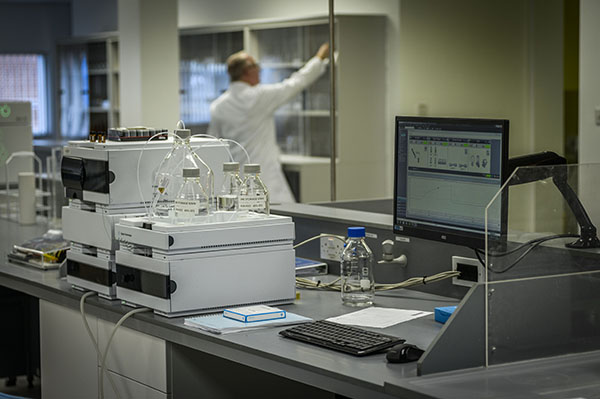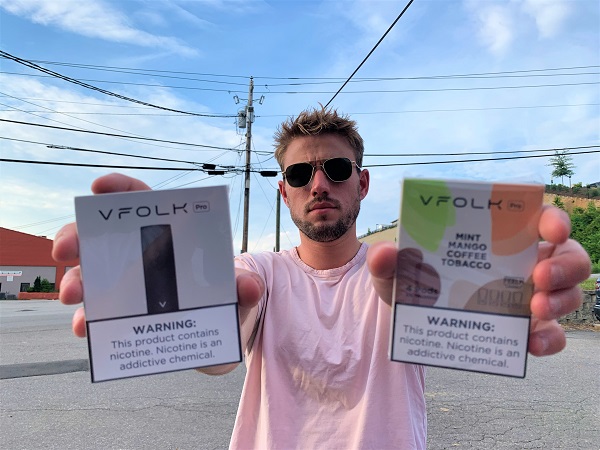In their response to the recent vaping scare, health authorities may have done the public a disservice.
By George Gay
After listening to a few presentations given at the 2019 Global Tobacco & Nicotine Forum (GTNF), I started to wonder anew about the word “expert,” though I should make it plain that I am not questioning the expertise of the presenters.
The presentations suggested, among other things, that experts in the U.S. were reacting irrationally to health issues recently raised in respect of the use of vapor devices; that some vaping policies developed by U.S. experts were, to say the least, unhelpful; that people were broadcasting on U.S. television information about vaping that appeared to be expert but that was simply wrong; and that any number of governments outside the U.S., presumably advised by experts, were making irrational decisions in respect of vaping.
If it is true that experts are causing so many mismoves, what, you might ask, is an “expert”? Good question. Just after the U.K.—or parts thereof—voted in 2016 to leave the EU, a prominent politician and leave campaigner caused some disquiet when, in refusing to name any economists who backed the country’s exit from the EU, he was reliably quoted as saying that “people in this country have had enough of experts.”
He was clearly talking about expert economists, but his statement was condemned widely, including by one popular scientist whose television programs reach a wide audience. The gist of the responses was that if people shut their ears to the opinions of experts, chaos and anarchy would descend upon the world.
This has a ring of truth about it, but I suppose some might retort that chaos, in the form of environmental breakdown, is being given a clear run even with any number of experts in place. But again, while this retort would have a ring of truth about it, it would sidestep the uncomfortable fact that environmental experts are not in control of the environment. They must compete with experts at plundering our natural resources in the name of making money for the ear of politicians, who, while democracy still stands, have the final say. Like it or not, politicians are the experts of last resort.
One way of getting around the issue of experts failing in their chosen fields is to assume that there is no such thing as an expert. All you must do is extrapolate to all fields of endeavor what William Goldman said about the motion picture business: “Nobody knows anything.” And while that might sound a mite dismissive, it is much less so when you consider that he went on to qualify that remark with, “Every time out it’s a guess and, if you’re lucky, an educated one.”
That raises another issue. What part of being an expert is played by education and intelligence, two concepts that I have to admit I would struggle to define and the latter of which I would have no idea how to measure? Still, such lack of knowledge does not stop me from wondering whether an expert necessarily must be well educated and intelligent. Indeed, are education and intelligence inextricably linked? I would suggest not. Clearly, many people are intelligent without being educated while many well-educated people are not what I would judge to be intelligent because they lack attributes such as common sense, creativity and natural wit.
Nowhere is it better demonstrated that a lack of education and intelligence need not be a bar to be an expert than in the U.K.’s Houses of Parliament. Votes form the only qualification necessary for being a representative of the people in the House of Commons, given that one meets certain criteria to do with such things as age, citizenship and the ability to stump up a nonrefundable deposit, while membership of the House of Lords is down to a complex form of Buggins’ turn that doesn’t bear too much scrutiny much of the time.
That’s worth thinking about. The people who are voting on issues that will affect everybody in the land and some of those overseas, and who might plunge us into war, need not be educated or intelligent, and they need not be what many people would consider to be an expert. Indeed, a person with little education and the wit of a paving slab could become a Member of Parliament and be elevated to a high office of state, depending on just how far she is willing to go in towing the party line or on what Homer Stokes would describe as the state of cronyism, nepotism and rascalism within the system.
But, of course, you don’t have to be thick as a brick to be a politician, and many are highly educated and intelligent. Recently in the U.K., a prominent politician implied that his superior intelligence or common sense would have allowed him to escape from a tragic event in which many people were killed. The politician is, without question, well-educated and intelligent, but, judged only on this comment, you would think him otherwise.
Apart from the fact that his remark was crass, hurtful and politically dumb, he had failed to discern that what divided him from the people who died was not intelligence but the availability of information. He was viewing the tragedy from the safety of his armchair and with benefit of hindsight. Those who died were caught up in fast-moving events and were acting in line with official advice—advice provided by experts.
But I digress. To me, the post-referendum brouhaha about experts in the U.K. came down to the fact that people see things differently. A specialist’s view of an expert is different to that of the person in the street. To the specialist, an expert is somebody learned in their field, though not necessarily somebody the specialist would agree with, while to the person in the street, an expert is somebody who gets things right, and those two attributes don’t always go hand in hand.
Within the field of science, however, these two definitions of what constitutes an expert should not cause so much conflict as in some other fields because, in theory, science is a dynamic process in which theories are raised, confirmed or refuted and then, in either case, used to develop new ideas. This does not necessarily work in the same way in other fields, such as economics, as our post-2008 world amply demonstrates. In the field of economics, I would suggest, expert opinion is like art and philosophy—it is basically whatever you can get away with.
There is a further complication, however, and that is between what I would roughly describe as “big science” and “small science.” We can all watch a television program about Heisenberg’s uncertainty principle and nod off to sleep happy in the knowledge that if we don’t catch the end of the program, we are not going to be put at any direct disadvantage, no matter how important the principle is to quantum theory.
Nod off, however, during a program on the damage done by the consumption of a certain foodstuff, and you could be shortening your life by a year or whatever. Or perhaps not, depending on whether the scientific experts on the program have got it right—indeed, in the terms of the lay person, whether those scientists are experts.
This is important, in my view, because the person in the street is being asked increasingly often to make judgments when “experts” disagree or rather when there might be broad agreement among experts but there are also loud, dissenting views also from experts—economists in the case of Brexit and globalization, say, public health professionals in the case of vaping and vaccinations, and scientists in the case of climate change and quantum theory.
So how is it possible for nonspecialists to make those calls? Well, there are strategies we can all employ depending on how much time we have. Common sense often helps but is not 100 percent reliable. We can ask ourselves why we think the expert is saying what she is saying—especially, who is funding her research and does she or a close relative or friend have a vested interest in what she is saying?
We can investigate her previous research and intercessions, we can try to chase down her credentials, keeping in mind that her qualifications might have been bought online, and we can investigate what her peers say about her, bearing in mind that we really ought firstly to check out just where they’re coming from. And if we’re retired and have some long winter evenings to fill, we can even try our hand at reading, without nodding off, the scientific literature, and we can revisit all of the information we have gathered to see how much of it has come from sources where lying is seen as part of the great rough and tumble of life.
But all of this gets thrown out of the window when the person in the street has little time to make what appears to be a life-affecting decision quickly and the advice being given out by normally reliable institutions conflicts with some other expert advice and common sense. This is what happened, in fact, when, earlier this year, there was an outbreak in the U.S. of acute pulmonary illness among a relatively small number of vapor device users.
The initial advice from the U.S. Centers for Disease Control and Prevention (CDC) was for people to stop using vapor devices with THC oil or nicotine liquids. Common sense indicated, however, that whereas it seemed plausible that the inhalation of THC oil, especially black market THC oil, which was a relatively recent activity, could be the cause of the outbreak, it was implausible that nicotine liquids, which had been consumed in this way around the world for about 10 years, were the cause of the problems. This seemed like a case of science, in the form of scientific experts at the CDC, getting it wrong.
At the time of writing, the CDC seems to have come around to a position closer to that dictated by common sense—an approach, by the way, that had the backing of some healthcare professionals. The problem, however, is that much damage has been done already. The fear raised in the minds of the public slowed the conversion of smokers to vapers and caused some converts to relapse.
It is worrying that this development seems to support the idea that “good” vaping science is always going to be playing catch-up with “bad” vaping science and that sometimes it is never going to catch up. What I mean by this is that the shock-horror headline on page one might be overturned the next month but only with a piece at the bottom of page 32. One of the presentations at the GTNF, which was held in Washington, D.C., in September, included a number of clips from a television program. One of these clips implied that vaping with nicotine liquids could reduce the IQs of young people by 10–15 points from what they might have otherwise been. It was then pointed out that measuring such IQ deficits was difficult, something that could probably be accurately interpreted as being impossible and therefore never having been done.
But as the GTNF presenter pointed out, even though there were only a few seconds between the statements being made, the damage had surely been done. Most viewers, especially those with children still at school, were going to remember the 10–15 point IQ deficit because it was aimed at the heart and because it would later be in 72-point type on page one while few were going to remember the retraction, which was aimed at the head and was bound for an 18-point presentation on page 32.
There is a further problem here. Once those viewers who watched the program and who absorbed the 10–15 point statement passed this information on to their friends at the school gate, they were probably well on their way to becoming experts. Their friends would ensure this in quoting them while passing on the information to others.
Perhaps we are all bound to become experts for 15 minutes. What a frightening thought.













